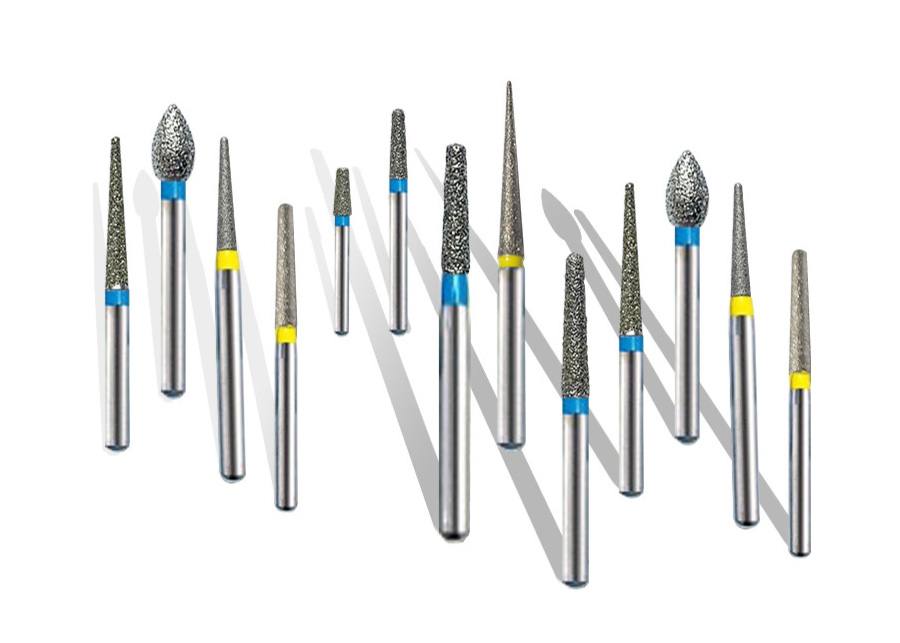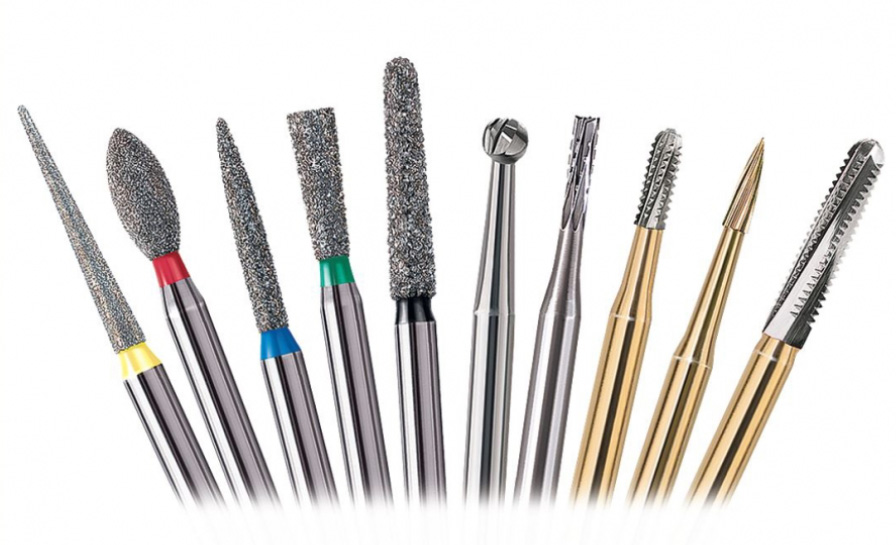What Are Dental Burs?
Dental burs attach to a handpiece and are used for cutting and polishing hard tissues of the mouth. There’s a huge range available depending on the type of procedure that’s being undertaken. Typically they are made of steel, tungsten carbide or diamond grit.

Burs have three parts: the head, the neck and the shank. The head contains blades which rotate to cut the tissue. The shank is the longest part and is inserted into the handpiece. The neck connects the two parts. The angle and positioning of the blades and the shape of the head determines the bur’s use.
Diamond Burs
Diamond burs (ISO 806) are widely used by dentists around the world, most often with high speed handpieces. Diamond is able to grind away hard tissues such as enamel and bone, leaving a rough surface. They are formed by bonding small particles of diamond onto a substrate. Most commonly they come with a friction grip (FG) shank. They’re designed to reduce tooth structures and are commonly used for crown and veneer related procedures. High quality, they offer tremendous accuracy, allowing a fast and smooth cut. However they tend to have a shorter lifespan than other types of burs; repeated sterilisation reduces their cutting effectiveness.
Diamond burs are made from the finest quality diamonds and the shank is hardened, ground 420F grade stainless steel. Concentric, balanced and ISO colour coded for quick grit identification.

Tungsten Carbide Burs
Tungsten Carbide burs (ISO 500) are also known for their excellent precision. Tungsten carbide burs are three times harder than steel and this alloy helps the dentist to smooth down tooth structures to an incredible finish. They are available with FG and RA shanks. They’re often used when trimming and finishing composite restorations. They’re higher priced than steel burs, but they compensate for this with a longer working life. They are known for their minimal vibration and ‘chatter’ compared to other types of dental burs, and tend to build up little debris in use.
Often a tungsten carbide bur actually only has carbide in the tip; the material is brittle compared to steel, so often the shank will still be made of steel.

